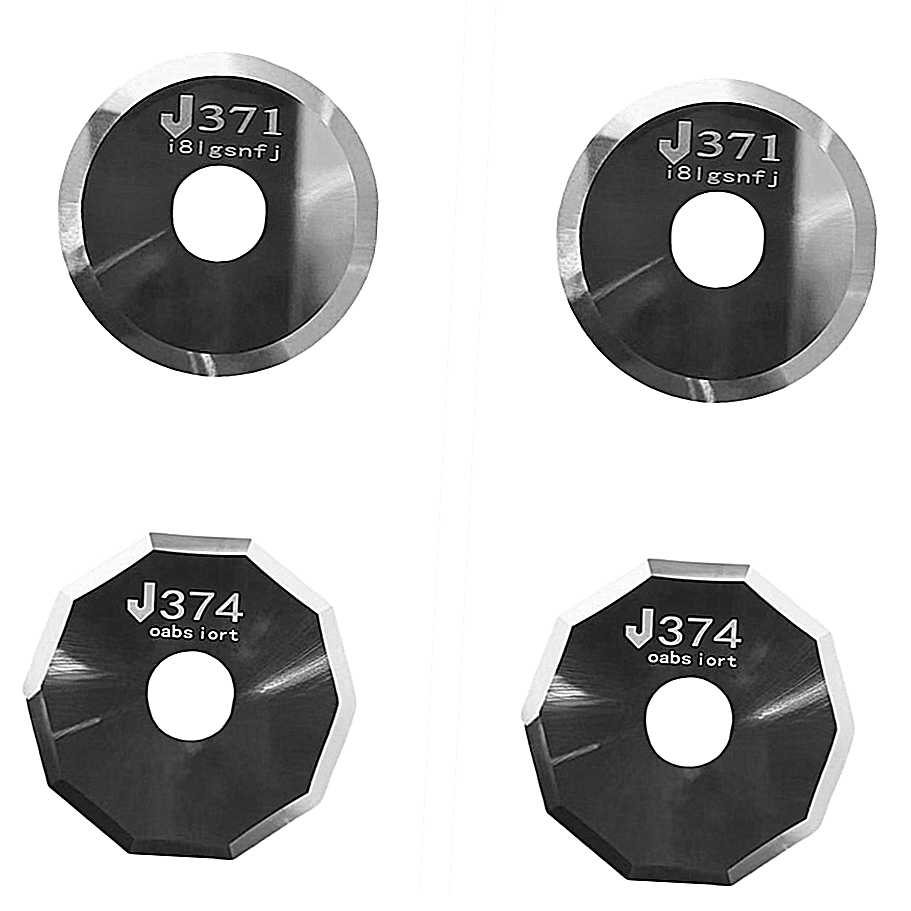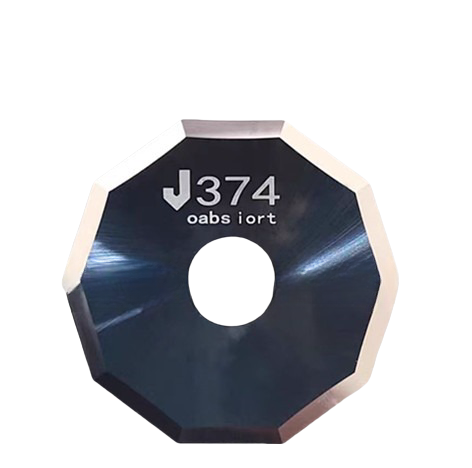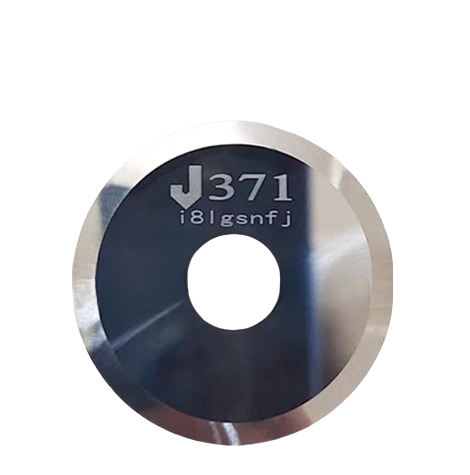The JWei J374 and J371 rotary blades are part of Jingwei’s precision cutting blade lineup, widely used in CNC digital cutting machines for textiles and composite materials. Here’s a detailed expert overview and comparison to help you understand their features and suitability:
Recommendations and Analysis for JWei J374 and J371 Blades
1.JWei J374 Rotary Decagonal Blade
oWhy choose it: The J374 is a 10-sided (decagonal) rotary blade with a diameter of 32 mm and thickness around 0.63 mm. It features an 8 mm mounting hole and can cut materials up to 5 mm thick. This blade is optimized for cutting a broad range of soft to medium-hard materials such as aramid fibers, carbon fibers, felt, glass fibers, non-woven fabrics, nylon, polyester, and other textiles.
Differentiators: Compared to smaller blades like the J373 or J375, the J374’s larger diameter allows for smoother, more stable cuts on thicker or tougher textiles. Its carbide construction ensures durability and long-lasting sharpness, which is crucial for industrial or high-volume cutting operations.
Advantages:
High precision and clean cuts on technical textiles and composites.
Good cutting depth (up to 5 mm) for a rotary blade.
Compatibility with many JWei and other CNC cutters due to standard hole size.
Drawbacks:
Larger size might be less suitable for very fine or intricate detail work compared to smaller diameter blades.
Primarily designed for textile-type materials, so less ideal for very hard or thick materials like thick cardboard or plastics.
2.JWei J371 Rotary Blade
Why consider it: Although less detailed info is available specifically for J371, it is part of the same JWei rotary blade family and likely shares similar design principles. It is generally used for precision cutting in textile and soft material applications, with slightly different dimensions or cutting angles tailored for specific material types or cutting machines.
Differentiators: The J371 might have a smaller diameter or different blade geometry compared to the J374, making it more suitable for lighter or thinner materials or for machines requiring a more compact blade.
Advantages:
Potentially better for fine or delicate cutting tasks due to smaller size or sharper angles.
Maintains tungsten carbide durability and sharpness.
Drawbacks:
May have a shallower cutting depth than J374, limiting use on thicker materials.
Less widely documented, so compatibility and exact specs should be verified before purchase.
Additional Insights
Both blades are tungsten carbide rotary knives, ensuring excellent wear resistance and long service life, which is essential for industrial cutting environments.
The 10-sided rotary blade design allows for multiple edges to be used before blade replacement, improving cost-effectiveness.
These blades are compatible with many JWei CNC cutting tables and also fit other brands with similar blade mounts, making them versatile.
When choosing between J374 and J371, consider your material thickness and cutting precision needs: J374 excels at thicker, tougher textiles; J371 may be better for lighter materials or more detailed cuts.
Summary
For most industrial textile cutting applications requiring robust, precise rotary blades, the JWei J374 stands out due to its larger diameter, deeper cutting capability, and broad material compatibility. The J371 is a complementary option for lighter materials or more detailed cutting needs. Both blades deliver high durability and precision thanks to their tungsten carbide construction and decagonal design, making them excellent choices for professional CNC cutting setups.
PREV : Summa 500-9860 500-9861 500-9862 Decagonal (10-Sided) Rotary Knife Blades Difference NEXT : Tungsten Carbide Blades | Choosing the Right Material








